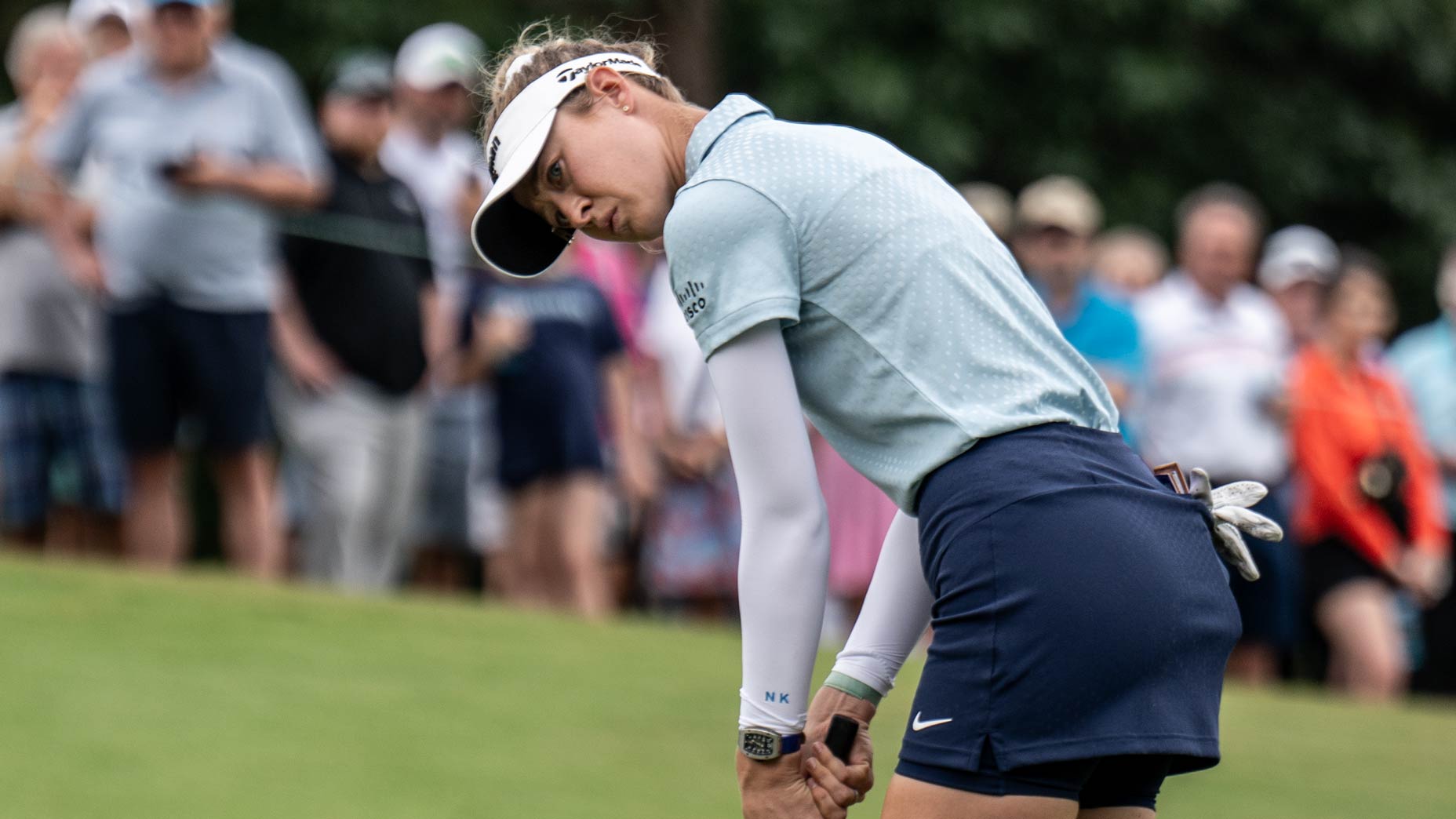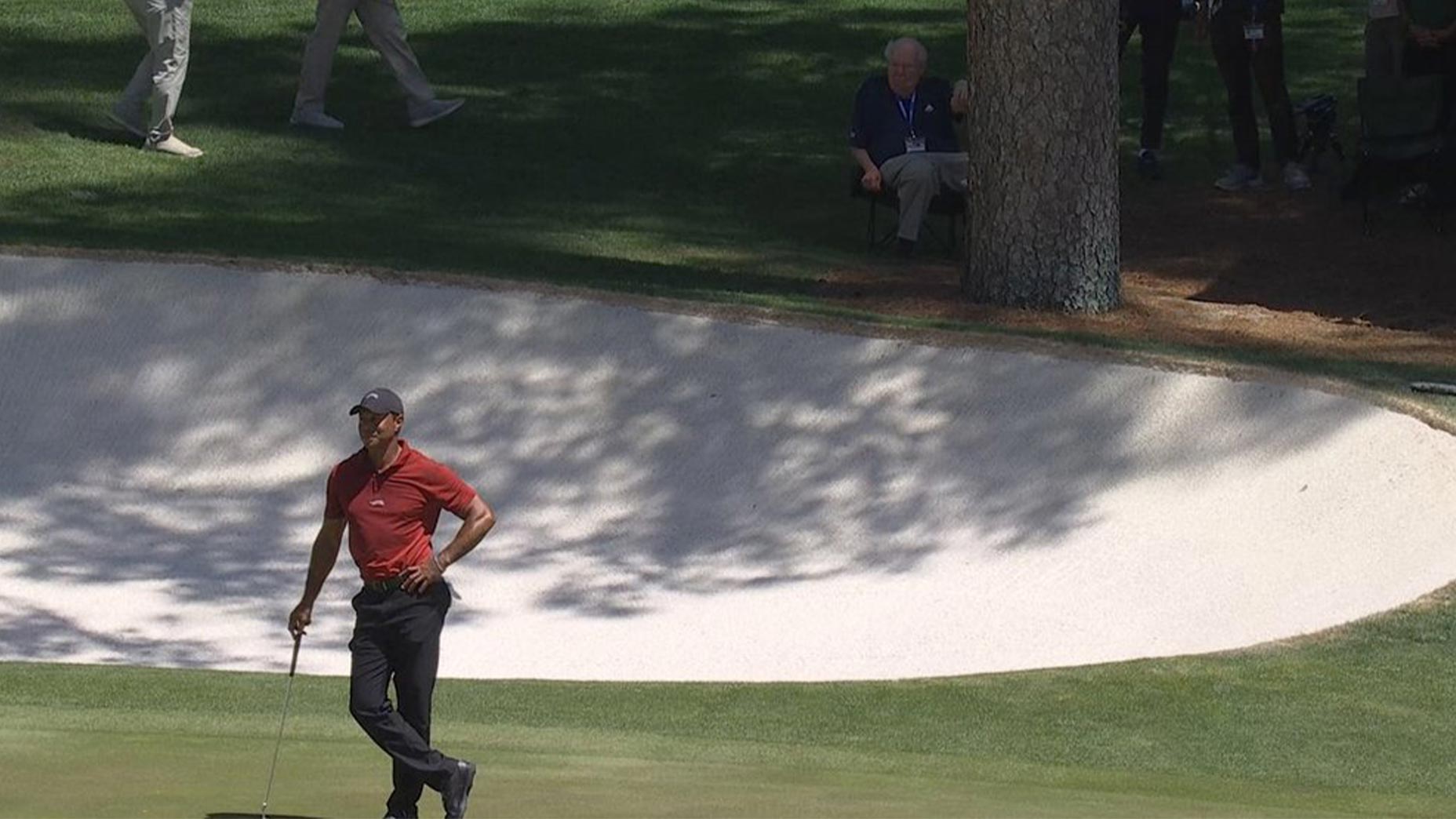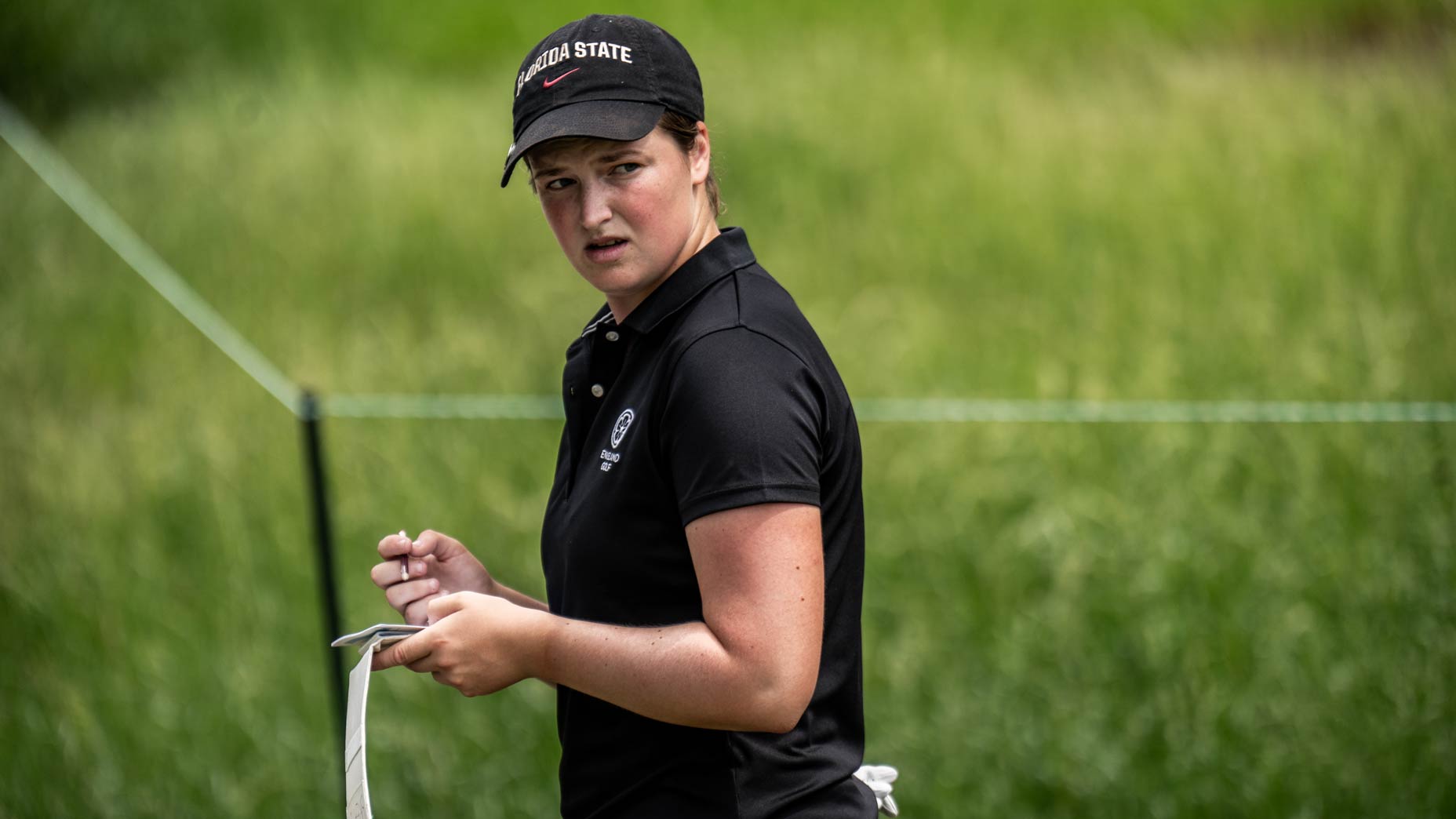 Augusta Women’s champ wanted to make Chevron cut. Now she could win
Augusta Women’s champ wanted to make Chevron cut. Now she could win
4 things Tiger Woods does every time he’s playing well
Tiger Woods is feeling great this week, which should be pretty obvious. He is winning the golf tournament, after all. But there are other ways to tell when Tiger’s mind, body and game is all in a good place. Unfortunately, I’ve had to learn this by trial and error over the years, watching many pained, winced swings. Thankfully, there’s none of that at the Zozo Championship this time around.
Every time Tiger tees it up, I watch for four very specific things. They’re not technical swing things, per say. Head over to our — GOLF Top 100 Teacher Hall of Famer Mike Adams’ Tiger analysis for that — but rather body language cues. They’re easy to spot, and when Tiger’s playing his best, he does all of them. Look out for them when you’re watching Tiger’s final round at the Zozo, and whenever else he plays.
1. Pause between backswing and downswing
Tiger’s talked openly about this, and it often comes back to haunt him when he has a nerve-wracking tee shot. When Tiger’s back is stiff, he can’t load fully on the backswing, so he begins the downswing too quickly. The result is a short, jumpy golf swing, with tempo that’s too quick and a shots that usually miss to the right. When Tiger’s swinging his best, like he is this week, he makes a full backswing, with a slight pause at the top, and a smooth transition into the downswing.
2. No high right shoulder
Tiger’s miss is usually a block. The clubhead gets too far behind his body, he leaves the clubface too far open, and the ball takes off a mile right. There’s a variety fo reasons why it happens (one of which is above), but when it does, you can tell because his hands get really low and his right shoulder gets unusually high. It’s not something he can control, but it’s the result of him trying to use his body to square the club at the last minute. He gets away with it sometimes, but not consistently.
Tiger’s “save” swing is on the left below; his ordinary compensation-free move on the right.
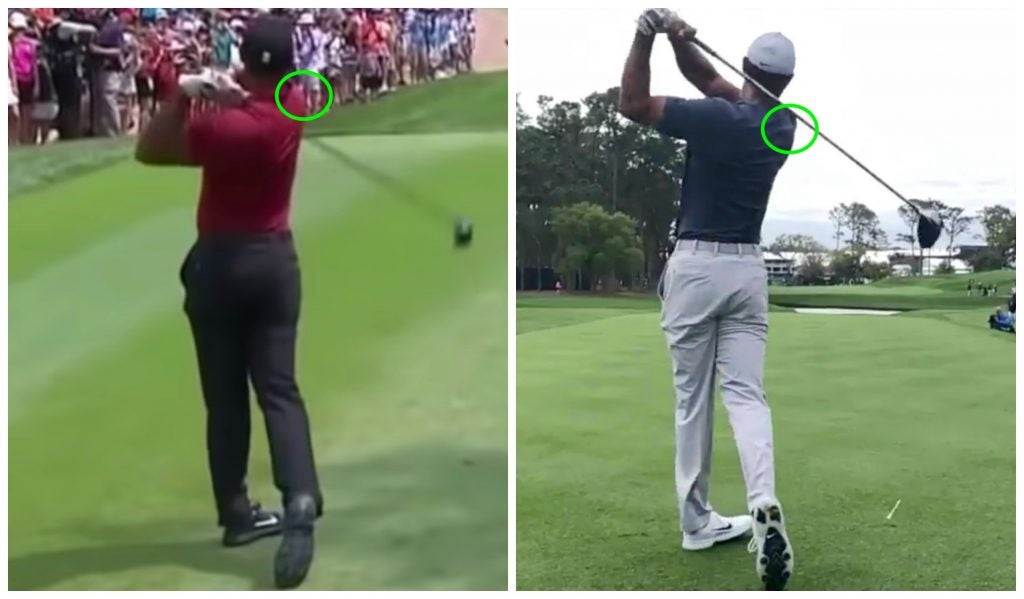
ADVERTISEMENT
3. Less forward lean
This is a pretty recent one, the result of his various back injuries over the years. It’s become the most sure-fire way to tell if Tiger’s back is feeling well that week.
When Tiger’s back is stiff and achy, he tends to lean his upper body towards the target on his follow through. Why? Because by leaning his torso toward the target, like you can see Tiger doing on the left below (a picture I snapped during the 2019 Northern Trust Open), it takes pressure off his back. His weight is more forward because he’s trying to stay pain-free and keep it away from his lower back. When his back feels fine, like you can see on the right below, he’s not instinctively trying to protect it, so he lets his torso stay more on top of his lower back.
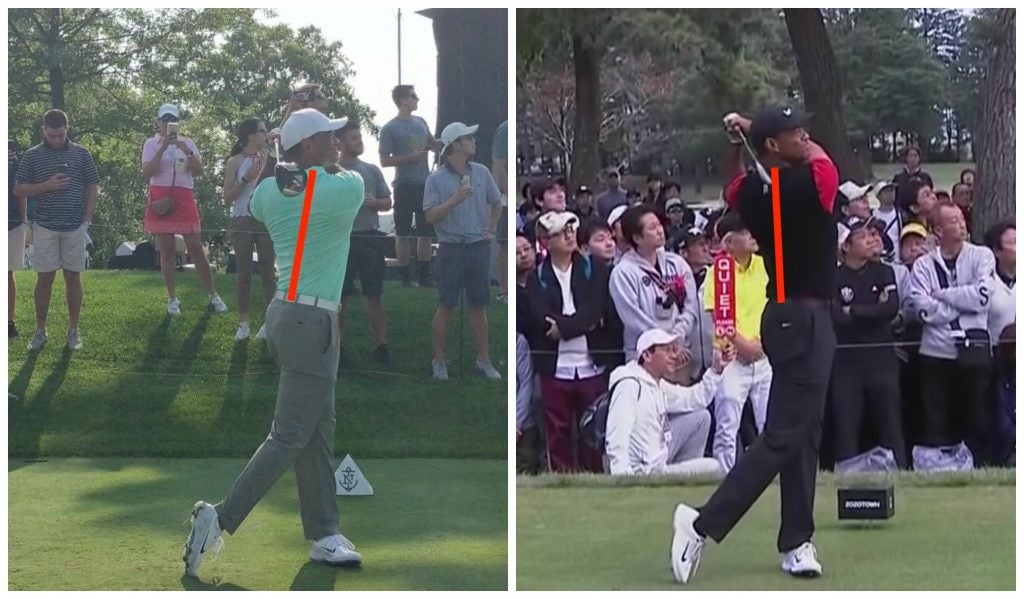
4. Club twirl
Last but not least, the most obvious, the one that everybody can see: The club twirl. Tiger plays with such swagger when he plays well, and the clubs twirl early and often whenever he does.
ADVERTISEMENT





